
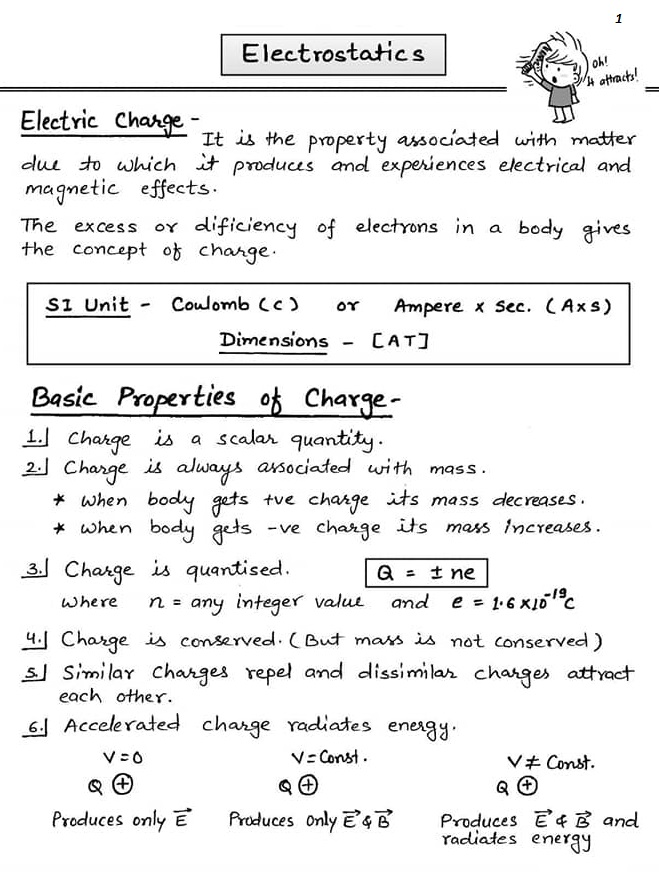
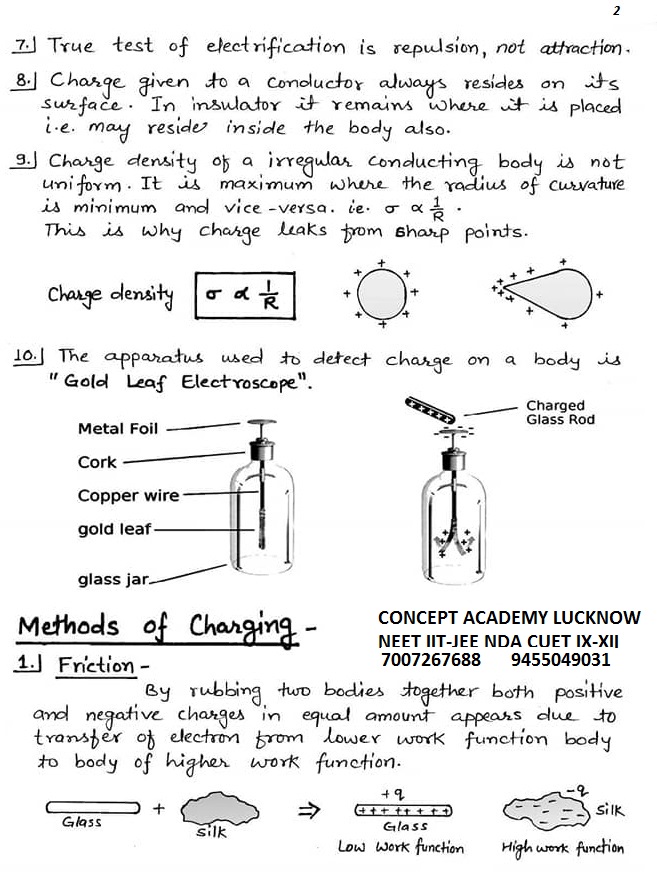
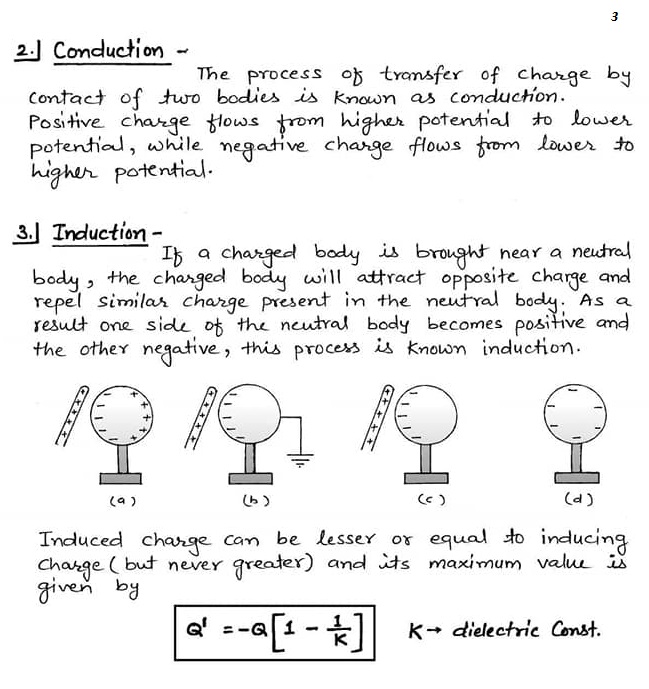
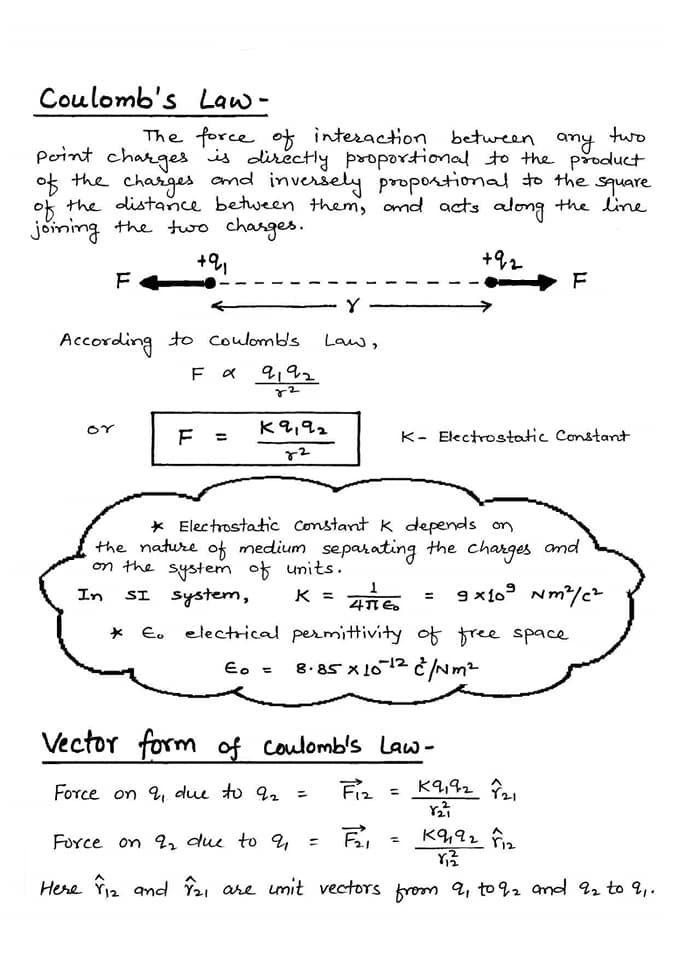


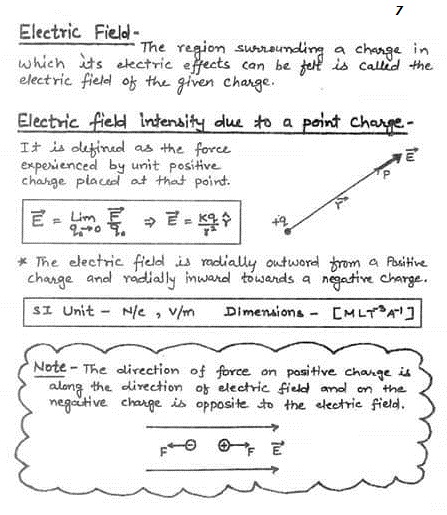
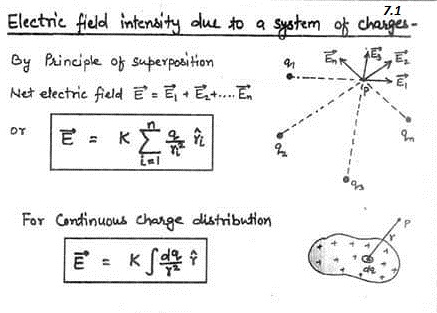




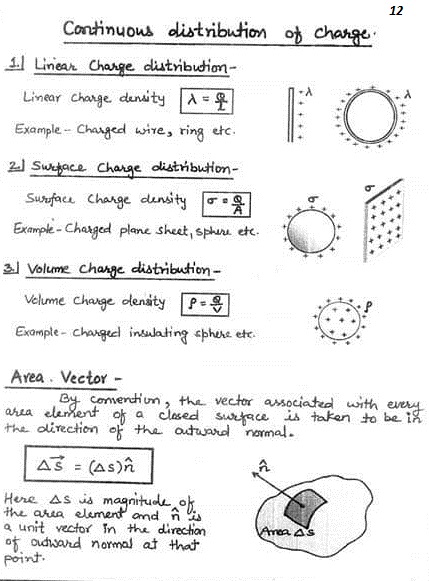
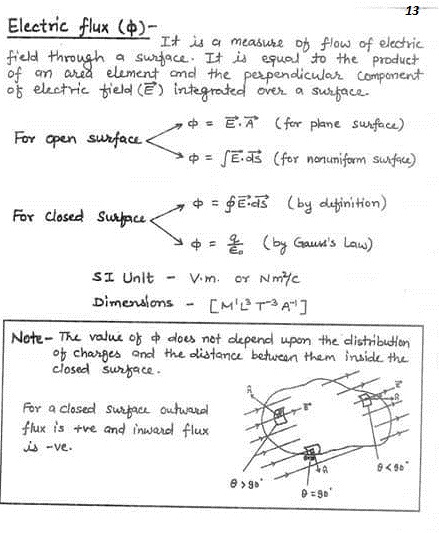
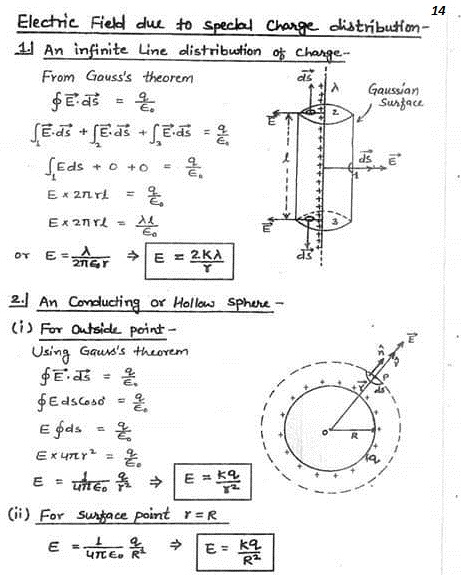
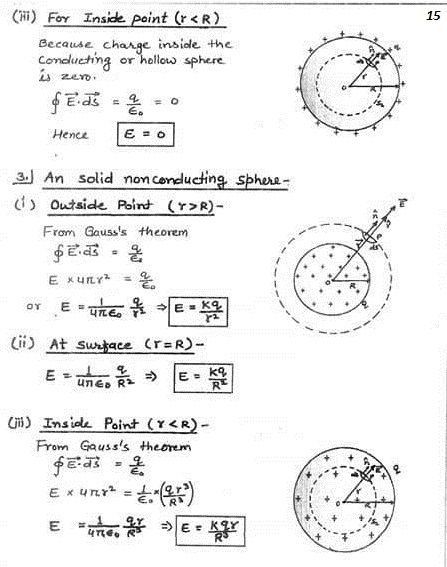
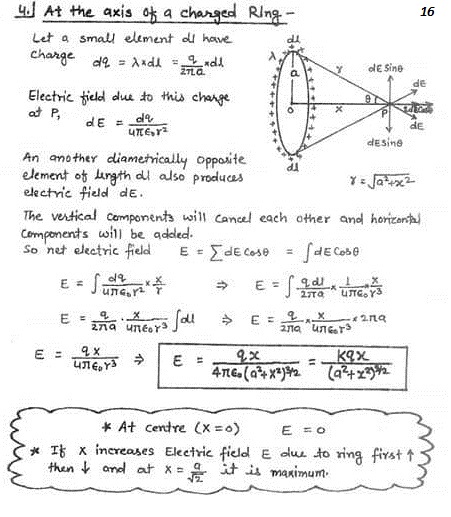
LET’S SEE COLORFULL


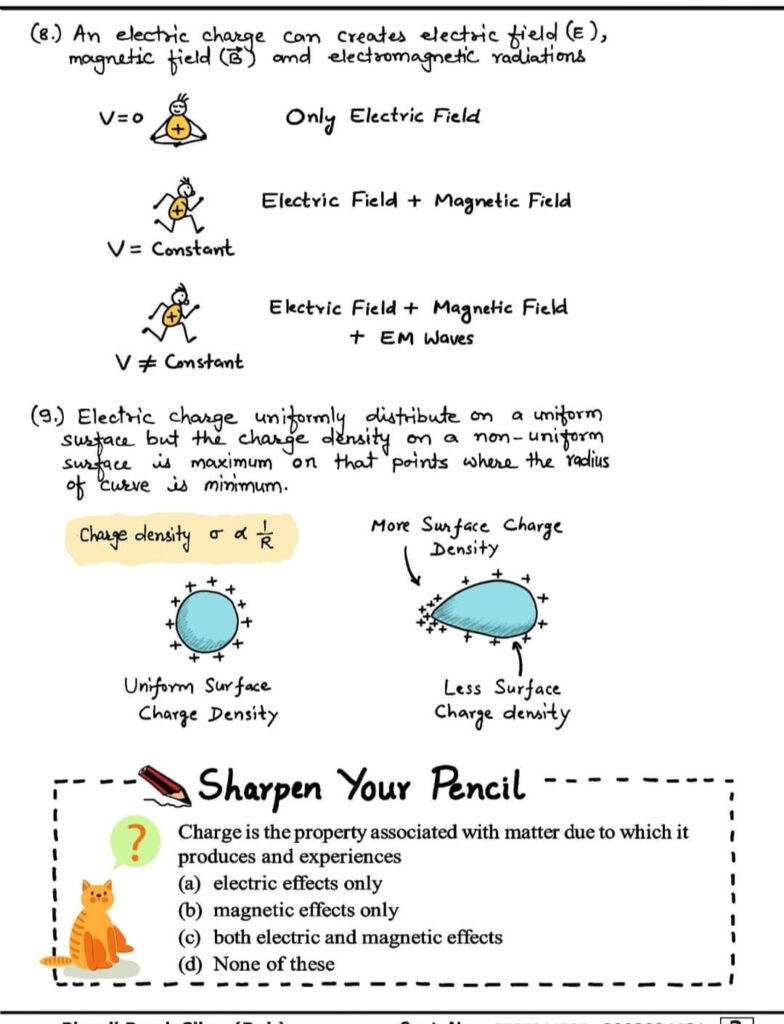
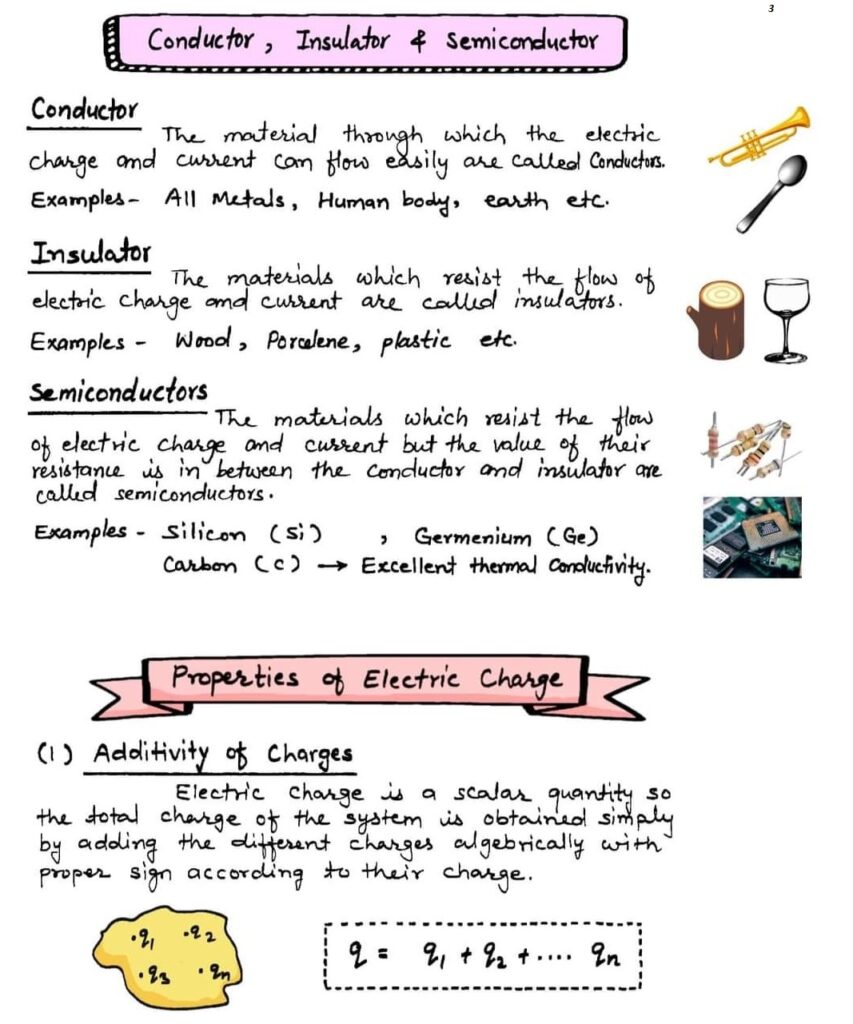



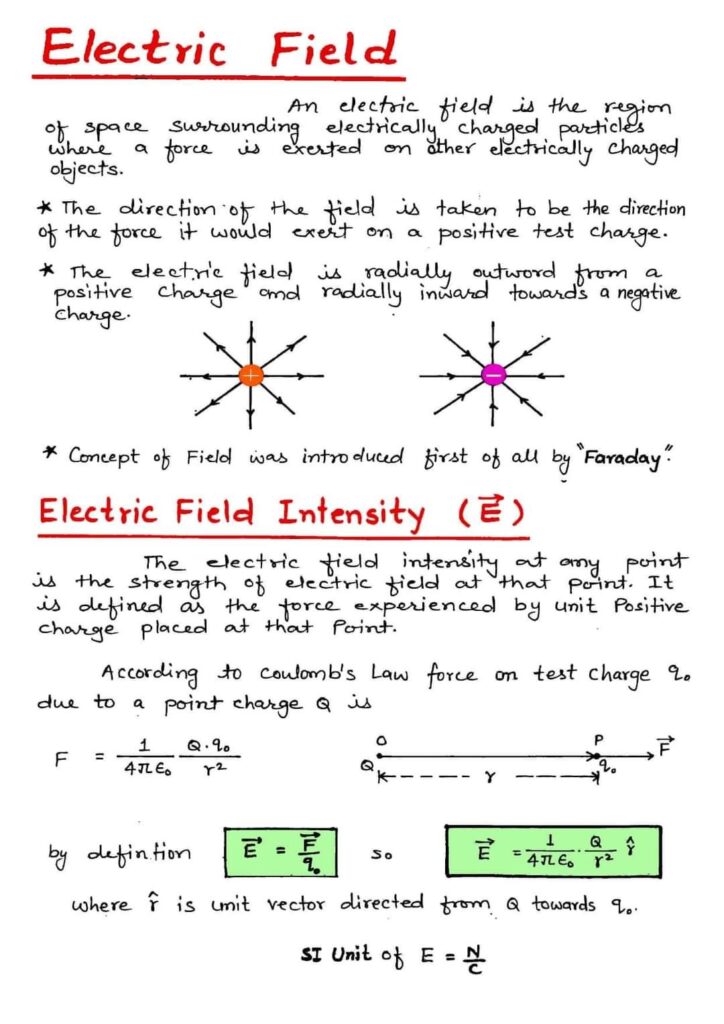
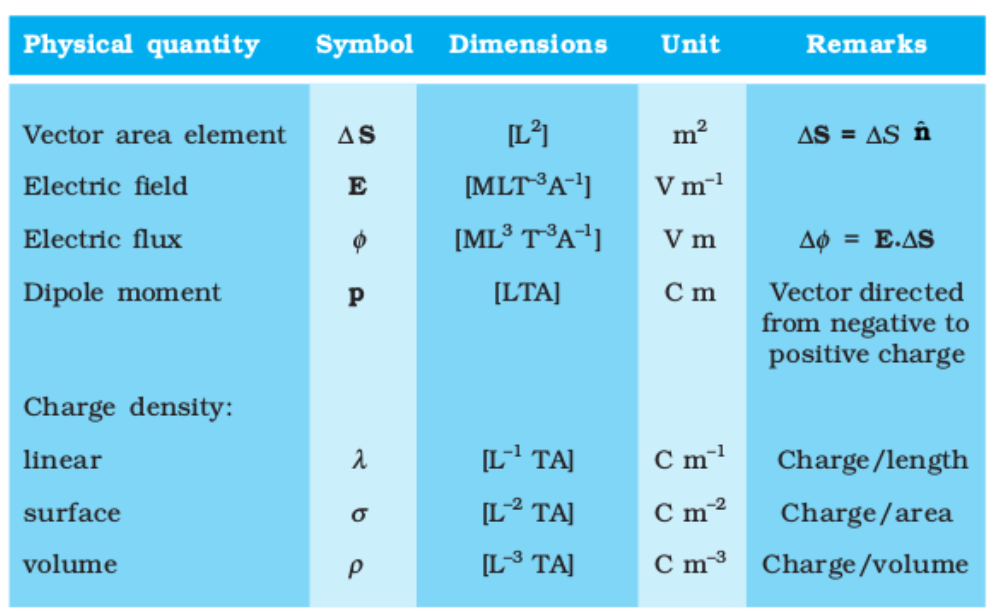
IMPORTANT QUESTIONS
Q.1 An uncharged conductor A placed on an insulating stand is brought near a charged insulated conductor B. What happens to the charge and potential of B?
Q.2 Write the ratio of electric field intensity due to a dipole at a point on the equatorial line to the field at a point at a point on the axial line, when the points are at the same distance from the centre of dipole.
Q,3 If 10^9 electrons move out of a body to another body every second, how much time is required to get a total charge of 1 C on the other body?
Ans. 198 Years
Q.4 How much positive and negative charge is there in a cup of water?
ns. 1.34 * 10^7 C
Q.5 Coulomb’s law for electrostatic force between two point charges and Newton’s law for gravitational force between two stationary point masses, both have inverse-square dependence on the distance between the charges and masses respectively.
(a) Compare the strength of these forces by determining the ratio of their magnitudes (i) for an electron and a proton and (ii) for two protons. (b) Estimate the accelerations of electron and proton due to the electrical force of their mutual attraction when they are 1 Å (= 10^-10 m) apart? (mp = 1.67 × 10^–27 kg, me = 9.11 × 10^–31 kg)
Q,6 Consider three charges q1, q2, q3 each equal to q at the vertices of an equilateral triangle of side l. What is the force on a charge Q (with the same sign as q) placed at the centroid of the triangle, Shown in Concept Fig 1.1
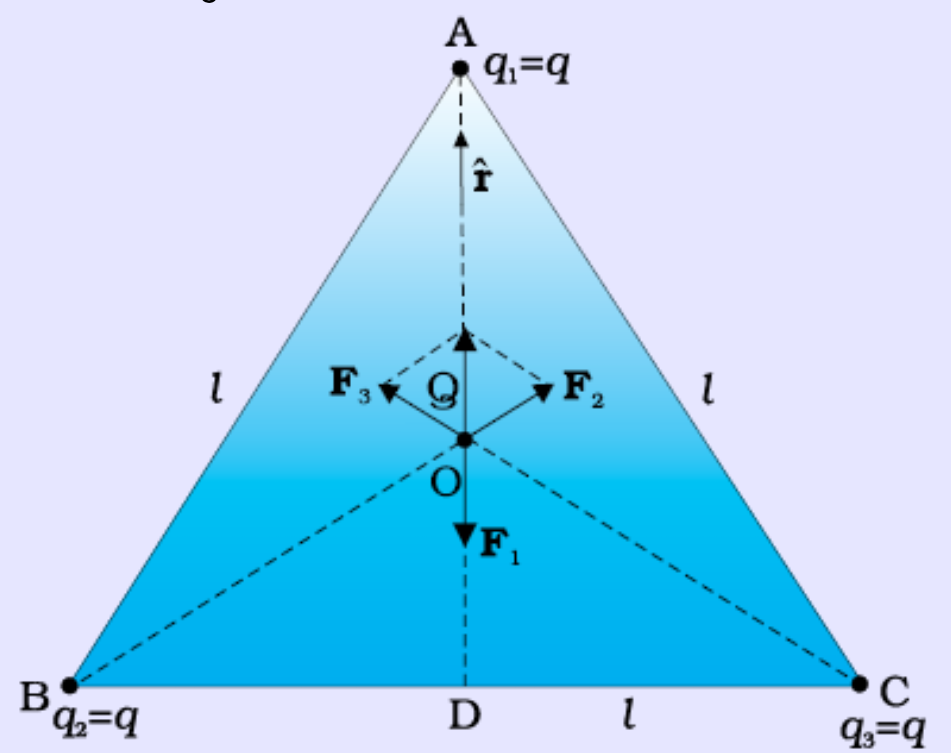
Q.7 Consider the charges q, q, and –q placed at the vertices of an equilateral triangle, as shown in Concept Fig. 1.2. What is the force on each charge?

Q. 8 Two point charges q1 and q2, of magnitude +10^–8 C and –10^–8 C, respectively, are placed 0.1 m apart. Calculate the electric fields at points A, B and C shown in Fig. 1.3.

Q.9 What is the force between two small charged spheres having charges of 2 × 10–7C and 3 × 10–7C placed 30 cm apart in air?
Q. 10 The electrostatic force on a small sphere of charge 0.4 µC due to another small sphere of charge –0.8 µC in air is 0.2 N. (a) What is the distance between the two spheres? (b) What is the force on the second sphere due to the first?
Q.11 Check that the ratio ke2/G memp is dimensionless. Look up a Table of Physical Constants and determine the value of this ratio. What does the ratio signify?
Q.12 (a) Explain the meaning of the statement ‘electric charge of a body is quantised’.
(b) Why can one ignore quantisation of electric charge when dealing with macroscopic i.e., large scale charges?
Q. 13 When a glass rod is rubbed with a silk cloth, charges appear on both. A similar phenomenon is observed with many other pairs of bodies. Explain how this observation is consistent with the law of conservation of charge.
Q. 14 Four point charges qA = 2 µC, qB = –5 µC, qC = 2 µC, and qD = –5 µC are located at the corners of a square ABCD of side 10 cm. What is the force on a charge of 1 µC placed at the centre of the square?
Q. 15 (a) An electrostatic field line is a continuous curve. That is, a field line cannot have sudden breaks. Why not?
(b) Explain why two field lines never cross each other at any point?
Q. 16 Two point charges qA = 3 µC and qB = –3 µC are located 20 cm apart in vacuum.
(a) What is the electric field at the midpoint O of the line AB joining the two charges?
(b) If a negative test charge of magnitude 1.5 × 10–9 C is placed at this point, what is the force experienced by the test charge?
Q. 17 A system has two charges qA = 2.5 × 10–7 C and qB = –2.5 × 10–7 C located at points A: (0, 0, –15 cm) and B: (0,0, +15 cm), respectively. What are the total charge and electric dipole moment of the system?
Q. 18 An electric dipole with dipole moment 4 × 10–9 C m is aligned at 30° with the direction of a uniform electric field of magnitude 5 × 104 NC–1. Calculate the magnitude of the torque acting on the dipole.
Q. 19 A polythene piece rubbed with wool is found to have a negative charge of 3 × 10–7 C.
(a) Estimate the number of electrons transferred (from which to which?)
(b) Is there a transfer of mass from wool to polythene?
Q. 20 (a) Two insulated charged copper spheres A and B have their centres separated by a distance of 50 cm. What is the mutual force of electrostatic repulsion if the charge on each is 6.5 × 10–7 C? The radii of A and B are negligible compared to the distance of separation.
(b) What is the force of repulsion if each sphere is charged double the above amount, and the distance between them is halved?
Q. 21 Suppose the spheres A and B in previous question have identical sizes. A third sphere of the same size but uncharged is brought in contact with the first, then brought in contact with the second, and finally removed from both. What is the new force of repulsion between A and B?
Q.22 Which among the curves shown in Fig. 1.4 cannot possibly represent electrostatic field lines?

